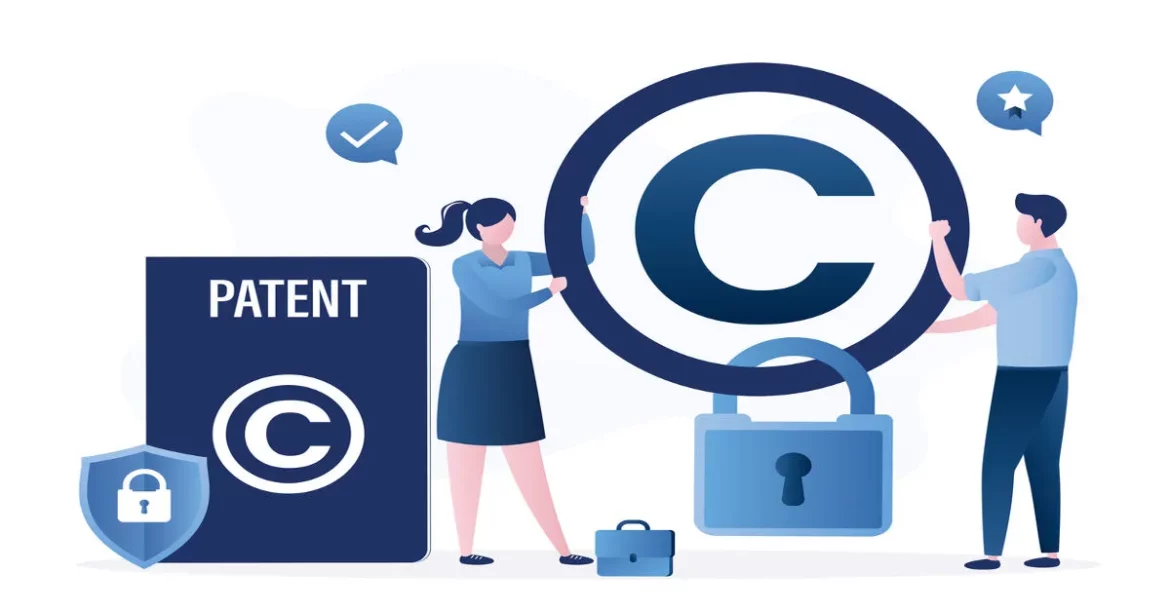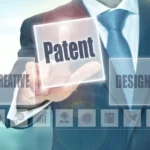Patent protection is vital for inventors in the technology and innovation sectors to safeguard their intellectual property. However, India’s Patents Act, 1970, Section 3(k), poses a considerable challenge for patenting inventions primarily based on instructions, such as software programs, algorithms, and business methods.
This article dives deep into the intricacies of Section 3(k), its implications for patent eligibility, and strategies to navigate the challenges it poses.
Legal Framework in India
The cornerstone of patent law in India is the Indian Patents Act, 19701, along with its subsequent amendments and rules. This legislation establishes the criteria for patentability, the procedures for obtaining and maintaining patents, and the rights and obligations of patent holders. Understanding the overarching framework provided by this Act is crucial for navigating the specifics of patent eligibility.
Indian Patents Act, 1970: An Overview
The Indian Patents Act, 1970, serves as the primary legal instrument for the protection of inventions in India. Enacted to consolidate and amend the law relating to patents, it aims to encourage innovation and contribute to socio-economic and technological development. The Act outlines the substantive and procedural aspects of patent law, including:
- Definition of Invention: It defines what constitutes an “invention” as a new product or process involving an inventive step and capable of industrial application.
- Criteria for Patentability: It sets forth the fundamental requirements for an invention to be patentable, namely novelty, inventive step (non-obviousness), and industrial applicability.
- Patent Application and Grant Procedures: The Act details the process for filing patent applications, examination by the patent office, opposition proceedings, and the eventual grant or refusal of a patent.
- Enforcement and Remedies: It provides the legal framework for enforcing patent rights and the remedies available in case of infringement.
Section 3: Exclusions from Patentability – “What are not Inventions”
A critical aspect of the Indian Patents Act, 1970, is Section 32, which explicitly enumerates a list of subject matter that are not considered inventions within the meaning of the Act and are therefore not patentable. This section outlines various categories of exclusions based on public policy, ethical considerations, established scientific principles, and the nature of the subject matter itself. The exclusions under Section 3 are intended to prevent the monopolization of fundamental principles, discoveries, and certain types of creations that are deemed to be in the public domain or not appropriately protectable by patents.
Section 3(k) of the Indian Patents Act: Specific Exclusion for Certain Intellectual Creations
Within the broader scope of Section 3, Section 3(k)3 specifically addresses the patentability of certain types of intellectual creations, particularly those related to abstract concepts and information processing. It states that “a mathematical or business method or a computer programme per se or algorithms” are not inventions within the meaning of the Act. This provision has significant implications for the patentability of software-related inventions and business methodologies in India.
The interpretation of the phrase “computer programme per se” is particularly crucial and has been subject to considerable debate and judicial scrutiny. The prevailing understanding is that while computer programs as such are excluded, inventions that utilise computer programs and demonstrate a technical effect, and are implemented by a hardware element, are considered patentable. Similarly, mathematical methods, business methods, and algorithms are generally excluded unless they are integrated with a hardware or process that provides a tangible technical advancement.
Understanding the nuances of Section 3(k) is paramount for inventors and businesses operating in technology-driven sectors in India, as it directly impacts their patenting strategies and the scope of intellectual property protection available for their innovations.
Landmark Cases
The following cases highlight the strict application of Section 3(k), where patents have been denied as inventions were deemed algorithmic methods without demonstrating a technical effect or hardware integration.
Case: Opentv Inc vs The Controller of Patents and Designs4
In this case, the Delhi High Court held that the claimed invention was essentially a method of doing business, which is excluded from patentability under Section 3(k). The court emphasised that merely implementing a business method on a computer does not make it patentable.
Case: Blackberry Limited vs. Controller of Patents and Designs5
Blackberry’s patent application was rejected on the grounds that it was based on conditional logic without any inventive hardware component. The court concluded that the invention was algorithmic in nature and did not demonstrate a technical effect, rendering it non-patentable under Section 3(k).
Key Points for Patent Protection Eligibility
The following points must be considered by inventors while applying for patents.
Guidelines for Examining Computer Related Inventions (CRI)
The Indian Patent Office (IPO) has taken several steps to align its standards for examining Computer Related Inventions (CRI) with international standards (e.g., USPTO, EPO). In August 2015, the India Patent Office (IPO) issued the first guidelines for examining CRI. Subsequently, the IPO revised the guidelines twice, in the year 2016 and 2017. The currently active 2017 guidelines fail to define what constitutes a “technical effect” or “technical contribution” for CRI and it also lacks guidance for emerging technologies. In April 2025, the IPO released draft guidelines for examining CRI, explicitly defining the terms “technical effect/ technical contribution” and incorporating examples as well as recent case laws to provide greater clarity on CRI examination. The draft guidelines recognize emerging technologies, including Artificial Intelligence (AI), Blockchain, Machine Learning, IoT, Big Data, and Quantum Computing as potential areas of patentable innovation. The draft guidelines are currently in the public consultation phase, and the IPO has invited the public and stakeholders to submit their feedback. The draft guidelines will be finalized based on the feedback and is expected to come into effect in the near future.
Excluded Inventions
Section 3(k) excludes the following from patentability:
- Mathematical Methods: Pure mathematical theories or formulas are not patentable.
- Business Methods: Methods of conducting business, even if implemented on a well-known computer system, are excluded.
- Computer Programs per se: Software without a technical effect or hardware integration is not patentable.
- Algorithms: Abstract algorithms without a specific technical application are excluded.
Technical Effect Requirement
For a computer-related invention to be patentable, it must demonstrate a “technical effect” or contribute to a “technical advancement.” This means the invention should solve a technical problem or bring about a technical improvement beyond the mere automation of a business process. This has been showcased in Comviva Technologies Limited vs Assistant Controller Of Patents6.
What Constitutes a Technical Effect
A technical effect refers to a tangible or measurable improvement in technology, such as enhanced processing speed, reduced memory usage, or improved user interface.
Examples
- An algorithm that significantly reduces data processing time.
- Software that improves the efficiency of a hardware component.
- A method that enhances the security of data transmission.
How to Potentially Meet Section 3(k) Requirements
To be patentable under Section 3(k), an invention involving a business method must demonstrate a specific, credible technical effect or enhancement beyond general computer functionality, not just improved system functionality, but a clearly defined, distinct, and innovative technical advantage.
- Detailed and specific claims: Draft claims that clearly define the technical aspects of the invention, avoiding abstract or generalised language.
- Emphasise technical contributions: Highlight how the invention solves a specific technical problem or contributes to a technical field.
- Combine software with hardware: Demonstrate how the software interacts with hardware components to achieve a technical effect.
- Focus on the inventive step: Ensure the invention involves an inventive step that is not obvious to someone skilled in the relevant technical field.
Section 3(k): A Comparative Perspective
Section 3(k) of the Indian Patents Act excludes certain categories—such as mathematical methods, business methods, computer programs per se, and algorithms—from patent protection. However, if an invention clearly demonstrates a technical effect or a tangible technological advancement beyond standard computation or business processing, it is still eligible for patent protection despite falling under these excluded categories.
Case: Ferrid Allani Vs Controller of Patents & Designs7
In this case, the court emphasized that most modern products, including cars, washing machines, and automobiles, integrate computer programs, and it is the overall technical effect produced by these programs that determines patentability. Further, the guidelines issued by the Indian Patent Office over the years have provided clear and coherent guidance to patent examiners regarding indicators of technical effect.
Case: Microsoft Technology Licensing LLC vs Assistant Controller Of Patents8
In this case, the court concluded that Parliament did not intend to exclude all CRI from patent eligibility. It drew a clear distinction between simple code instructions, which are not eligible for patents, and inventions that produce a technical effect, which are eligible. CRI that bring about technical effects, enhance system functionality, or address technical problems go beyond the exclusion under Section 3(k). This interpretation is in line with the revised CRI Guidelines of 2017, which focus on the invention’s substance and technical contribution rather than the mere inclusion of novel hardware.
Case: Raytheon Company vs. Controller General of Patents and Designs9
In this case, the court emphasized that the novel hardware standard that existed in the 2016 CRI Guidelines was replaced by the 2017 CRI Guidelines. The patent office was in error by following the inapplicable 2016 Guidelines. The court also emphasized that in the case of computer-related inventions, the patent office needs to examine the technical contribution or technical effect generated by the invention as claimed.
Case: Priya Randolph Vs Deputy Controller of Patent and Design10
In this case, the court held that the mere involvement of a business method in an invention does not automatically render it unpatentable under Section 3(k). If the invention demonstrates a technical effect or advancement, it may still be considered for patent protection.
Key Takeaway
The landscape of patenting instruction-based inventions in India, particularly those involving software, algorithms, and business methods, is intricately shaped by Section 3(k) of the Patents Act, 1970. As demonstrated by landmark cases and the emphasis on the “technical effect” requirement, the Indian patent office and courts maintain a stringent approach to prevent the patenting of abstract computational processes or the mere automation of existing practices.
The ongoing controversy and debate underscore the inherent challenge in differentiating between a purely computational algorithm and one that delivers a tangible technical improvement. Case law interpretations reveal a consistent focus on identifying a demonstrable advancement in a technical field, often necessitating a clear nexus between the software or algorithm and hardware interactions or significant enhancements in technological functionality. Understanding the precise contours of what constitutes a “technical effect” remains pivotal for inventors seeking patent protection for their computer-related innovations.
Ultimately, striking a balance between fostering software innovation and preventing the monopolization of fundamental algorithms and computational concepts is crucial. Inventors must meticulously articulate and evidence the technical contributions of their inventions, moving beyond mere computational logic to showcase real-world technical advantages. By focusing on detailed claims that highlight technical advancements and clearly demonstrating the inventive step within a technical context, innovators can strategically navigate the requirements of Section 3(k) and enhance their prospects for securing patent protection in India’s evolving technological landscape.
FAQs
1. What does Section 3(k) of the Indian Patent Act exclude from patent protection?
Section 3(k) excludes the following from being considered inventions under Indian patent law:
- Mathematical methods
- Business methods
- Computer programs per se
- Algorithms
These are considered abstract ideas and not patentable unless they produce a demonstrable technical effect.
2. Can software and algorithms be patented under Section 3(k)?
Yes, but with caveats. Software and algorithms can be patented only if they demonstrate a technical effect or are implemented in a way that results in a technical advancement. For example, a software application that improves hardware performance or enhances data security could qualify, especially when it is implemented in a hardware component.
3. How does Section 3(k) impact innovation in digital and AI technologies?
Section 3(k) often acts as a barrier to patent protection for innovations in digital and AI domains, where the core invention lies in computational logic or algorithms. Startups and tech firms may find it difficult to secure patents for novel AI models unless they can tie the innovation to a concrete technical effect. Further the draft CRI guidelines released on April 2025, provide clarity on the patentability requirements of AI related inventions. The CRI guidelines when finalized is expected to boost the Indian economy by encouraging AI-related innovation and facilitating the patenting of such inventions.
4. Is it possible to patent business methods in India despite Section 3(k)?
Business methods are not patentable in India under Section 3(k). However, if a business method is implemented through a technically innovative process or offers a technical solution to a technical problem. That solution is clearly explained in the patent application; there is a possibility of acceptance. The focus must be on the how (technical implementation), not just the what (business concept).
5. How does Section 3(k) compare to global patent laws on software protection?
India’s stance is more conservative compared to regions like the United States or Europe.
- In the US, software can be patented if it meets the criteria of novelty and non-obviousness and solves a technical problem (under the Alice framework).
- In the EU, computer-implemented inventions are patentable if they solve a technical problem in a novel and non-obvious way.
- In India, software must go a step further by demonstrating a clear technical effect and integration with hardware to be eligible, making it harder for standalone software innovations to secure protection.



